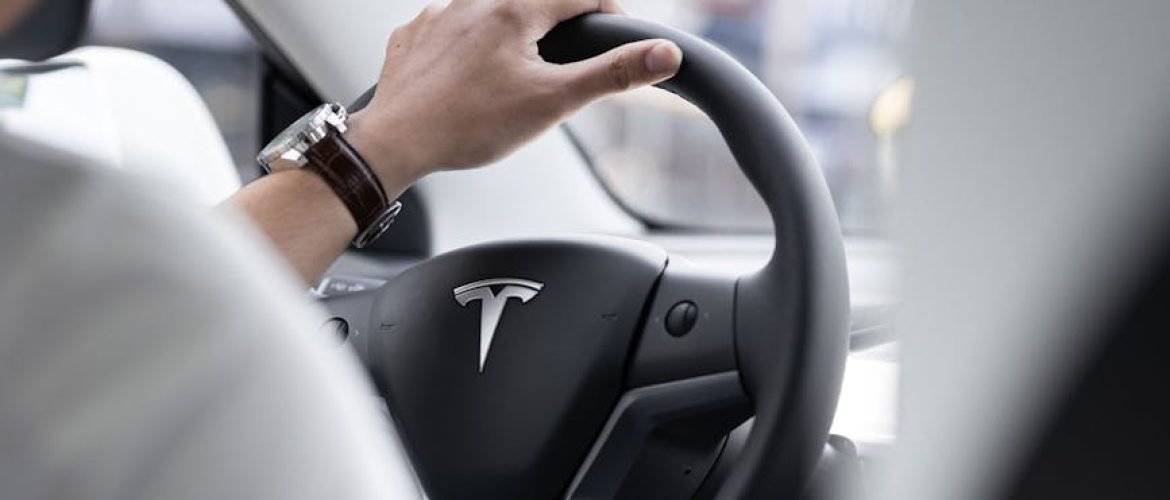Advancements in Autonomous Technology
You’re probably curious about all the buzz around autonomous vehicles, right? Well, hold onto your seatbelt because the future of how we get from “A” to “B” is changing fast. We’re going to check out some cool stuff about who’s making major moves in this space and all the smart tech that’s making it happen.
Who’s Who in the Auto Game
So, who’s crafting these driverless wonders? It’s a crowded race with the likes of Tesla, Waymo, Uber, and good old GM all throwing their hats in the ring. They’re pouring big bucks into figuring out how to make your car practically drive itself like some sci-fi movie come alive.
Let’s peek at a few key players and what they’re up to:
| Company | Who They’re Teaming Up With | What’s Their Game? |
|---|---|---|
| Tesla | Pushing software boundaries | Full Self-Driving vibes |
| Waymo | Partnering up with Lyft and Fiat Chrysler | Advanced smarts, safety first |
| Uber | Snagged by Aurora | Rideshare thrills, big rigs |
| GM | Cruisin’ with Cruise | City slicking services |
In this tech race, folks at NVIDIA are making waves too. They’re cooking up all-in-one tech setups that let cars think fast and act smart. Some big names like BYD and Volvo trust NVIDIA to help drive them into the future.
Sensors and AI: The Brains of the Op
Now, let’s get into the gadgets and gizmos. The magic sauce for self-driving cars is a trusty team of sensors and some seriously brainy AI. These tech buddies help cars see, think, and react—all in the blink of an eye.
Think of the car as a band leader, with sensors like cameras, radar, and LIDAR being the instruments:
| Sensor Type | What It Do |
|---|---|
| Cameras | Scopes out objects and keeps an eye on the road |
| Radar | Sees things far and wide, even when the weather’s not cooperating |
| LIDAR | Maps everything, down to the last pebble |
All this intel goes into smart systems like deep neural networks—think of them like the car’s brainy sidekick. To juggle all this data and make snap decisions, cars use techy beast platforms such as NVIDIA DRIVE AGX.
Curious about more techie stuff in self-driving land? Check out our AI-powered autonomous systems section.
Bottom line: As tech keeps zooming ahead, these robotic rides are only getting better. Keep your eyes peeled for what’s next because the world of travel is just warming up.
Neural Networks in Autonomous Systems
Key Role of Deep Neural Networks
Deep Neural Networks (DNNs) are the brain behind autonomous vehicles. These clever systems help cars see, understand, and react to the world around them. They spot things like street signs, people, and other cars at lightning speed—a lot like how our own noggin figures things out. Quick, spot-on decisions are a big must-have for autonomous cars to zip around safely.
| What It Does | Cool Tricks DNNs Pull Off |
|---|---|
| Object Detection | Finds people, cars, and stuff in the way |
| Road Sign Recognition | Reads those pesky road signs |
| Path Planning | Maps out smart ways to get places |
| Intersection Management | Figures out and tackles intersections |
To juggle everything that comes with self-driving, lots of DNNs pitch in, each becoming a pro at something different. This way, they nail it in terms of accuracy and dependability. Handling all the data these DNNs throw out in real-time isn’t a cakewalk—it needs heavy-duty computing, like what NVIDIA DRIVE AGX offers.
Redundancy for Safety
Staying safe in self-driving tech hinges on being ready for hiccups. Using a bunch of DNNs sidesteps system crashes, so if one acts up, others step in without a fuss. This setup is a game-changer for keeping things on track.
| Safety Feature | What’s It Do? |
|---|---|
| Multiple DNNs | Each cracks different jobs to cover all bases |
| Diverse Sensors | Backup data keeping crucial stuff covered |
| Real-Time Monitoring | Keeps an eye on things, ready to fill in if something slacks off |
Autonomous systems have gotta move with the times, so the number of DNNs keeps growing as they tackle newer challenges. By adding more brains to the setup, they promise to sail smoothly and safely through whatever pops up.
NVIDIA’s stepped it up by crafting a total package—hardware and software catered just for the car biz. This nifty combo is like a cheat code for carmakers like BYD, Hyundai Motor Group, Jaguar Land Rover, Mercedes-Benz, NIO, and Volvo Cars to easily pop smart AI tech into their cars (Technology Magazine).
Mixing in redundancy with specialization in DNNs really puts a sharp focus on getting safety and smarts right in autonomous cars. Curious about how these systems vibe with other cool tech? Check out our thoughts on autonomous robotics and drone automation.
Industry Outlook and Challenges
When you take a peek at the world of autonomous vehicles, there’s a bunch of exciting possibilities lined up along with a fair number of bumps on the road. Let’s grab a closer look at the upswing in market potential and those gnarly safety and regulatory hurdles that come with it.
Market Growth Potential
The buzz around autonomous vehicles isn’t just hot air; the market’s cooking up a storm. By 2030, we’re talking about a market worth a whopping $2 trillion (TaskUs). It’s like a pot of gold that’s up for grabs for any business daring enough to jump in and innovate.
To give you a snapshot of how this market’s supposed to grow, peek at the table below:
| Year | Market Value (US$ Trillion) |
|---|---|
| 2023 | 0.4 |
| 2025 | 1.0 |
| 2030 | 2.0 |
Getting in on the autonomous tech bandwagon not only amps up market growth but also opens doors to all kinds of offshoots in the tech space. If your interest’s been piqued, check out our article on self-driving technology for more insights.
Safety and Regulatory Hurdles
Even with all that sunshine, there’s a few storm clouds on the horizon, especially on the safety and rules front. Trust issues loom large, with folks still wary about how safe these future rides are.
Trust isn’t just going to fall into companies’ laps; they need rigorous, clear-cut safety rules that users can count on. Building confidence in these tech-driven cars is a must if you want your autonomous fleets cruising down Main Street. Dig into the subject with our piece on ai-powered autonomous systems.
Handling various rules and regulations across countries adds to the headache of rolling these vehicles out globally. Getting international terminology to line up ain’t easy, but it’s crucial to tackle the rulebook tangle. Cooperation with local governments and international partners is the name of the game (TaskUs).
For a more in-depth look, be sure to swing by our content on autonomous robotics and see how regulation plays out in the worlds of ground machines and drone automation.
Economic Impact and Social Adaptation
Economic Benefits and Job Loss
Autonomous car tech is loaded with cash-register-pinging potential. Some folks with calculators estimate these smart vehicles could rake in about $936 billion yearly. How? Fewer fender-benders and folks getting stuff done while they’re stuck in what used to be traffic jams.
But hold your horses. With good, comes some not-so-good. Around 4 million American drivers could be nudged out of their seats, leaving them $180 billion short each year. Helping these workers find new gigs is gonna need hefty retraining programs and some safety nets.
| Numbers | Value |
|---|---|
| Annual Cash Flow Gains | $936 billion |
| Lost Wages from Job Losses | $180 billion/year |
| Old Cost from Car Crashes (2010) | $836 billion |
| Crash-Related Economic Damage | $242 billion |
| Lost Work Hours from Crashes | $57.6 billion |
Stats courtesy of Compact
Got a curiosity for buzzword-y topics? Peek at our piece on drone automation for its wallet effects.
Environmental Impact and Energy Efficiency
Steering towards more eco-friendly roads, AVs promise to cheer up Mother Earth by cutting emissions up to 90% (Compact). These emissions savings are thanks to slicker driving styles, smarter fuel habits, and a big old embrace of electric.
Yet, there’s a wrinkle. If everyone’s rolling along happily in their AVs, there might be more jaunts and longer hauls, dragging some of those green impacts down. So, city planners and policymakers need to get crafty to make sure AVs play nice with the environment.
For more on how smart systems can help with energy, scope our article on ai-powered autonomous systems.
Trust is the name of the game if AVs are going to become everybody’s best friend. People have to be sure these systems—their virtual drivers—are spot-on reliable and safe Compact).
Want to see how AVs mingle with other big ideas? Give our self-driving technology section a look-see.




